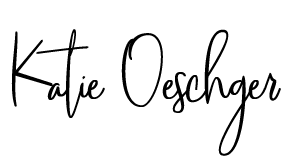Jerad Raines (Lead UX Designer, Co-Researcher)
Early Concept testing
Design Refinement
Conclusion
Accountability partners using Covenant Eyes’ new report summary can quickly determine whether or not they should be concerned about their partner’s internet activity.
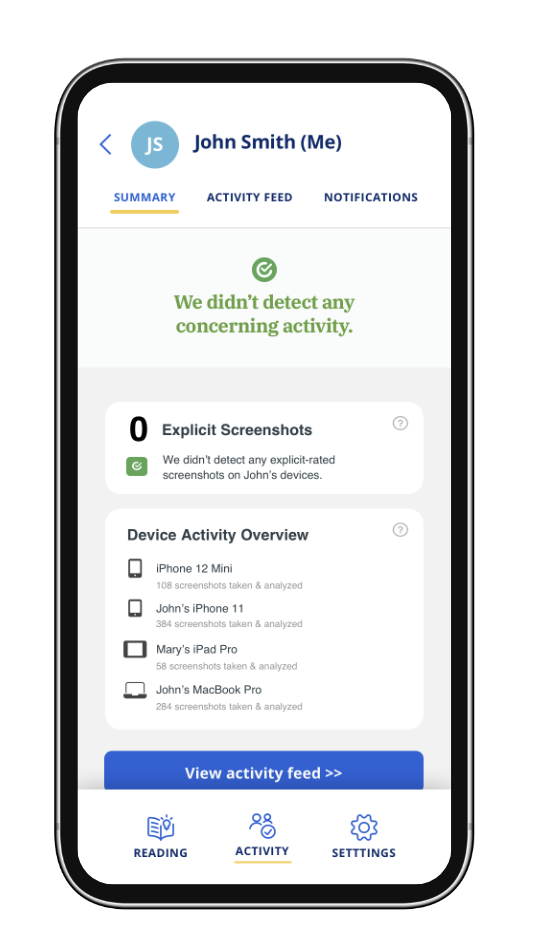
Jerad Raines (Lead UX Designer, Co-Researcher)
UX Researcher (Primary)
A/B Concept Testing
Quantitative Survey
UserTesting
Alchemer
Miro
Sketch
Confluence
Microsoft Excel
SPSS
Covenant Eyes is a SASS company in the business of changing customer's online behavior. A pioneer in artificial intelligence, Covenant Eyes has been using AI-driven technology to facilitate human-to-human accountability for the past 20 years.
Part of Covenant Eyes's core service offering facilitates accountability between the customer and an accountability partner to decrease undesired internet activity. As part of the service, accountability partners receive high-level reports of the customer's internet consumption and activity.
From past research, we knew that accountability partners could not determine whether or not they should be concerned about the content listed in a report. They wanted clear answers to the questions "Should I be concerned, what should I be concerned about, and how do I talk about it?" in the report.
The purpose of this iterative, mixed-methods research was to test and validate solutions designed to solve this recurring pain point.
Early Concept testing
Design Refinement
Conclusion
To address this challenge, a Covenant Eyes' UX designer created the Report Summary Module, to be added to the top of each email report. This feature aimed to help accountability partners quickly and accurately assess whether or not he/she should be concerned about the customer's recent internet activity.
The goal of this research was to test the effectiveness of two Summary Module design concepts compared to the current email report format. We hypothesized that the Report Summary Module would enable accountability partners to evaluate activity reports with higher accuracy.
The UX designer and I collaboratively planned and executed the experiment on the UserTesting platform.
Each accountability partner who participated in the study engaged with 1 of the 3 concepts and assessed whether they should be concerned about the activity. All design concepts and controls tested during this study only showed non-concerning reports.
I compared and contrasted these behavioral and attitudinal data including:

A total of 28 Covenant Eyes accountability partners participated across the three tests (i.e., design concept 1, design concept 2, control). The data were analyzed in the following steps:
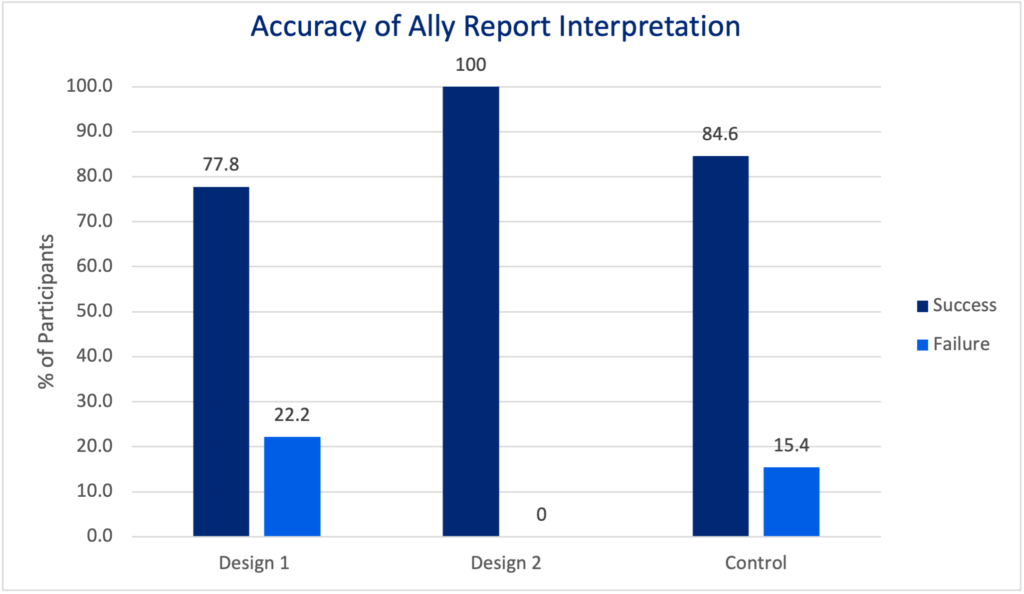
We found that accountability partners interpreted report content accurately across all three concepts (Chi Square Test, p=0.7778).
Some users struggled to decide because of image size and blur levels.
During each test, accountability partners were asked to rate (1) the design's ease of use and (2) their confidence in interpreting the report accurately.
Krusal-Wallis tests confirmed there wasn't a significant difference in either confidence (p=0.202) or ease of use (p=0.116) overall. A Krusal-Wallis test was selected because the data weren't normally distributed, there was 1 independent variable with multiple levels, the dependent variable was ordinal, and the data were independent.
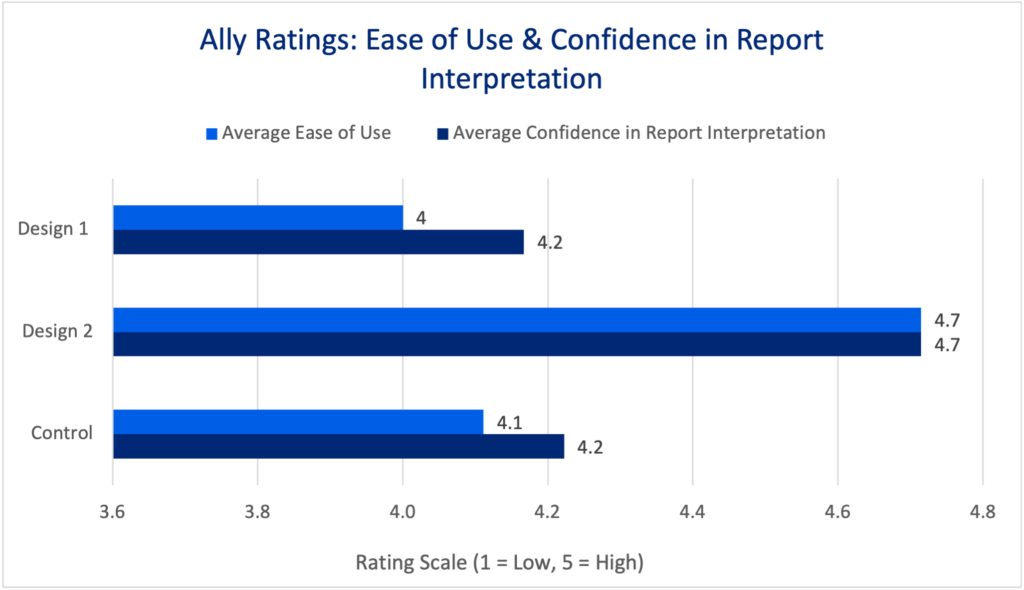
Despite participants being able to interpret all three reports easily, confidently, and accurately, participants did have positive things to say about the new potential feature. Participants mentioned:
Although the report summaries were well received, they were used differently across users. Some accountability partners fully trusted the summary module data, while others additionally reviewed the screenshots because they said the artificial intelligence had been incorrect in the past. These findings align with previous company research.
However, the majority of participants were interested in using a Report Summary Module (an additional 18% said they would use it once remediations were made), suggesting that a Report Summary Module feature could provide value to accountability partners reviewing Covenant Eye’s clean reports. In fact, 24% of participants who tested the new feature mentioned that the summary module was the most important feature in the email report.
The report summary idea was also further validated by participants in the control group (who never saw the report summary design concepts) with comments such as:
Concept testing helped identify minor content and design changes that the UX designer used to make the concepts more user-friendly. Remediation fell into three main categories:
A similar study was designed, but in quantitative survey format, so the refined design concepts could be tested and validated with a larger group of Covenant Eyes' accountability partners to get buy-in from leadership.
Additionally, this study investigated whether the email report could still meet accountability partner needs if shortened. The existing email report included a lot of content, which created many problems and design limitations. There could be an opportunity to re-imagine how email reports and other communication channels (e.g., My Account) work together.
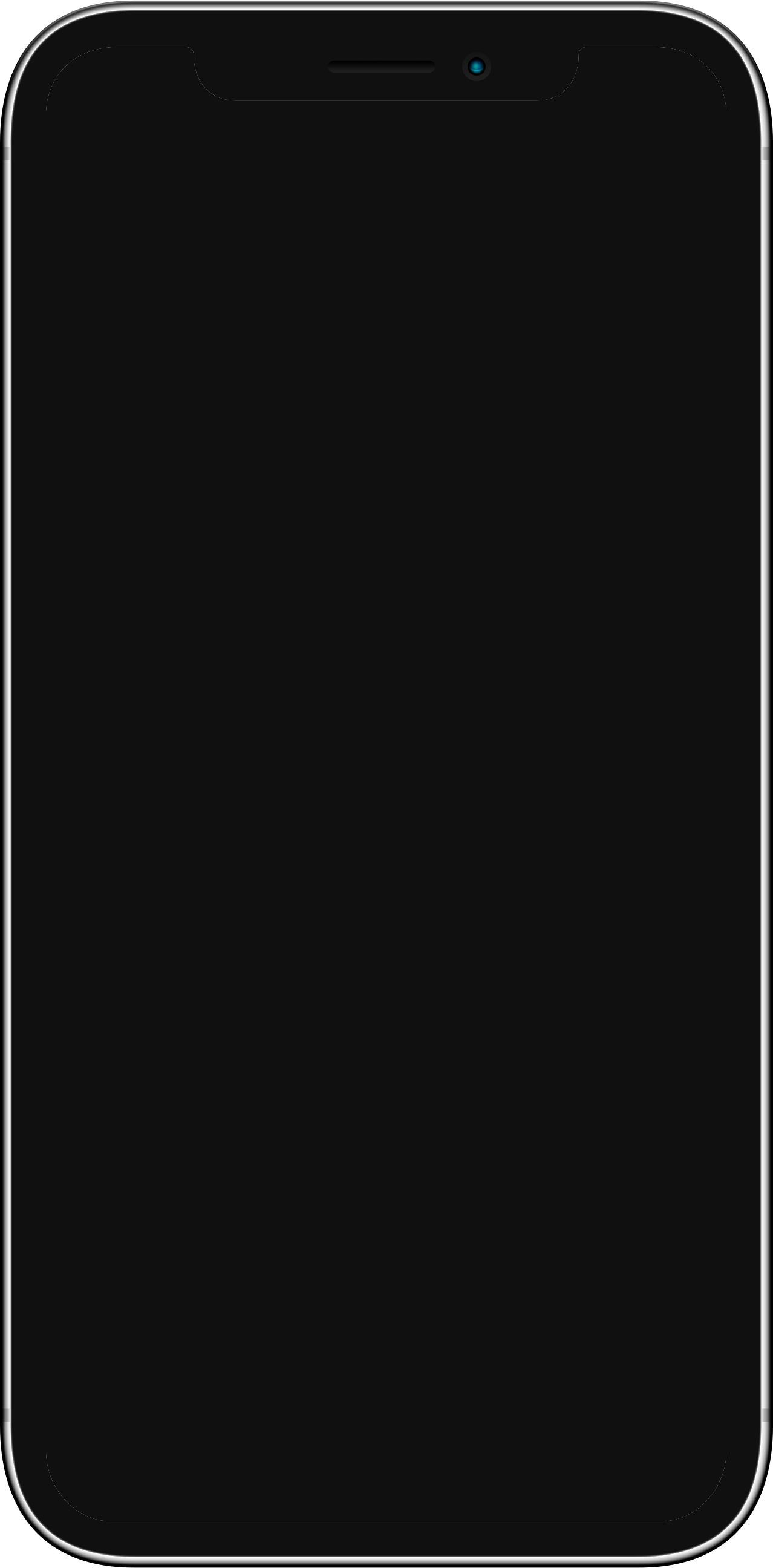
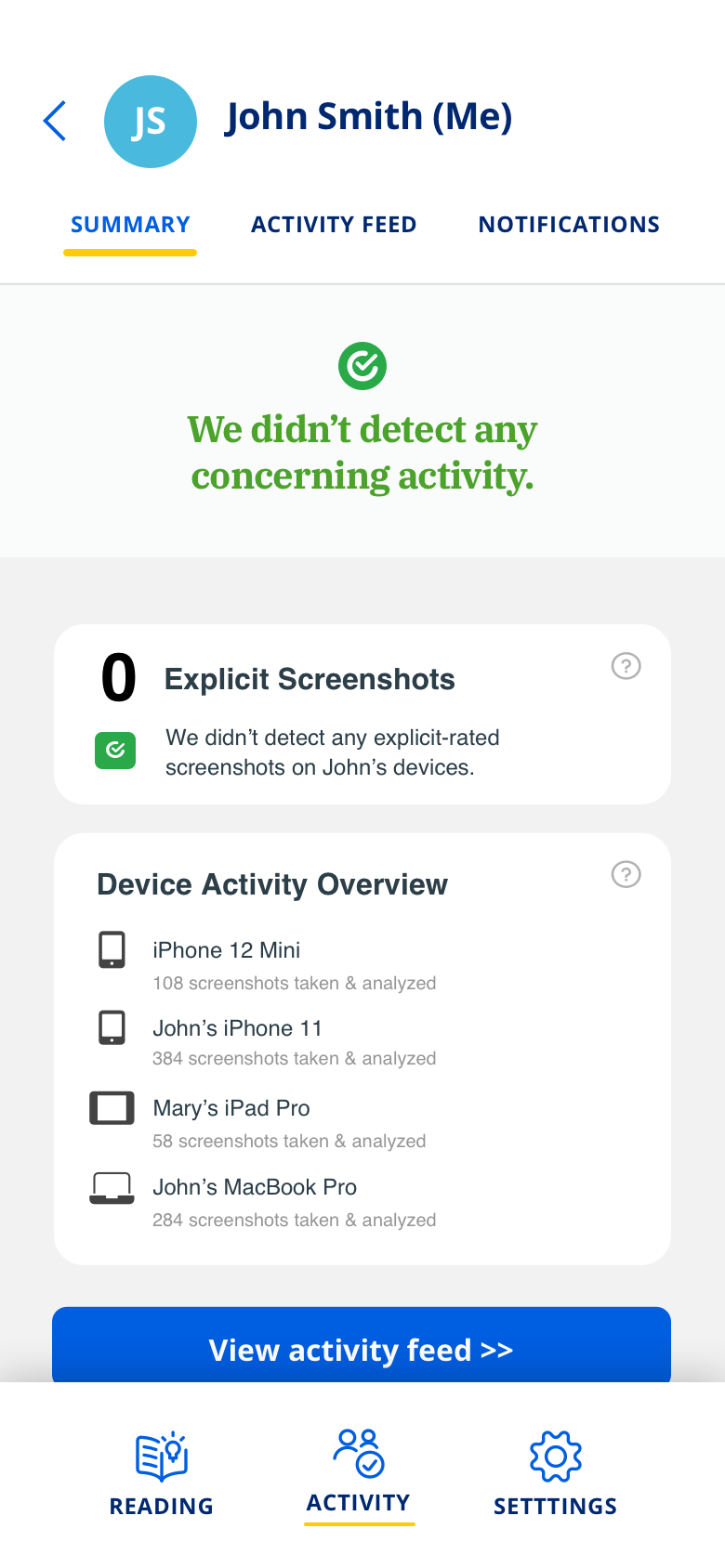
A total of 1,295 current accountability partners completed the survey, with participants randomly assigned to test one of the two design concepts. Both concepts were identical, except that Design Concept 2 featured a significantly shorted Recap of Activity section. For detailed activity information, accountability partners would need to access My Account. Both concepts included a summary module at the top of the email report.
Similar to concept testing, data were analyzed using descriptive statistics and a 15,000 sticky note affinity diagram.
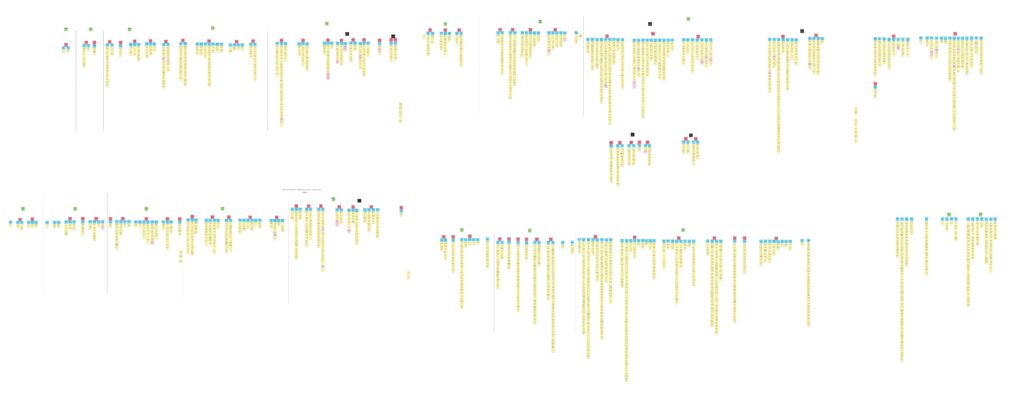
Similar to concept testing, accountability partners were asked to use an email report to determine whether or not to be concerned about a person's internet activity. If needed, they were also given the option to visit My Account to view more screenshots.
The graph shows that survey respondents' conclusions, using either design concept, were accurate ~90% of the time. There wasn’t a statistically significant difference among the groups for successful interpretation (p=0.985).
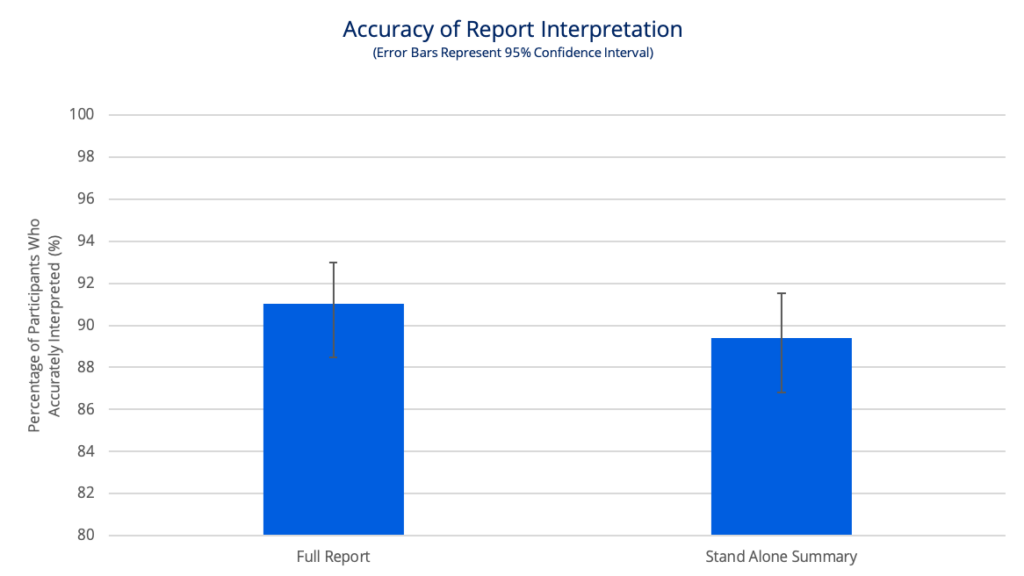
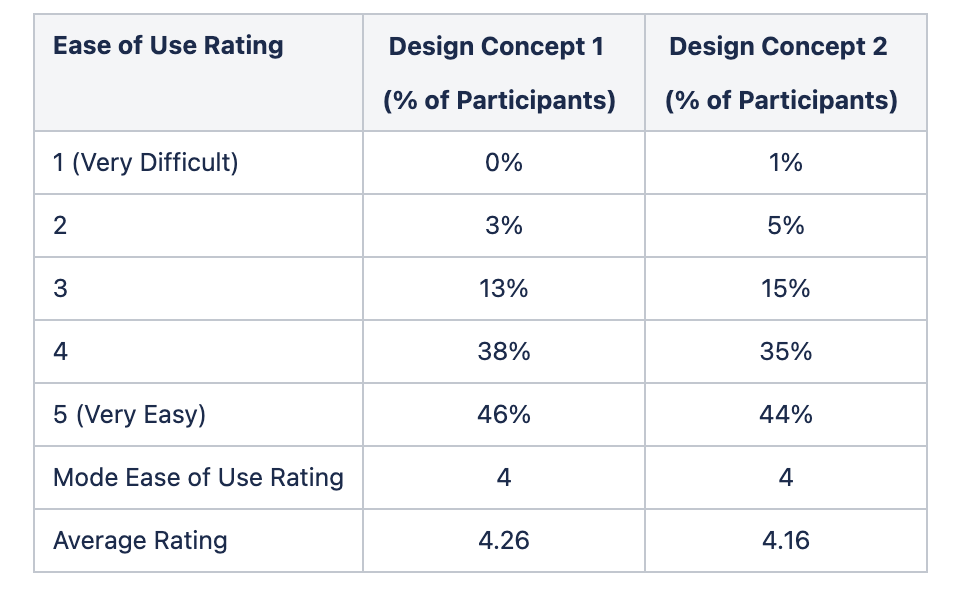
Decision-making was easy and made with high confidence. Accountability partners who selected either a 4 or 5 Ease of Use Score (for either design) reported they:
Approximately 70% of survey respondents from each group only used the email report to decide whether or not to be concerned about the hero's activity. In fact, accountability partners who only looked at the email report to make a decision did so with sigificantly higher accuracy (~99%). These data suggest it could be feasible to shorten email reports.
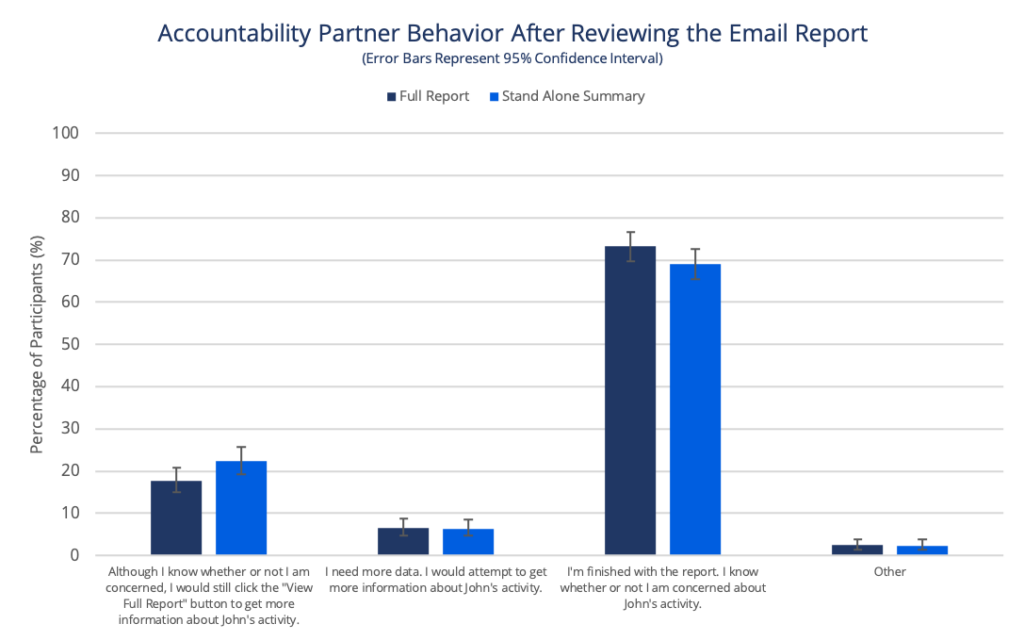
Chi-Squared Test of Independence did not find an association between design and next behavior (p=0.225).
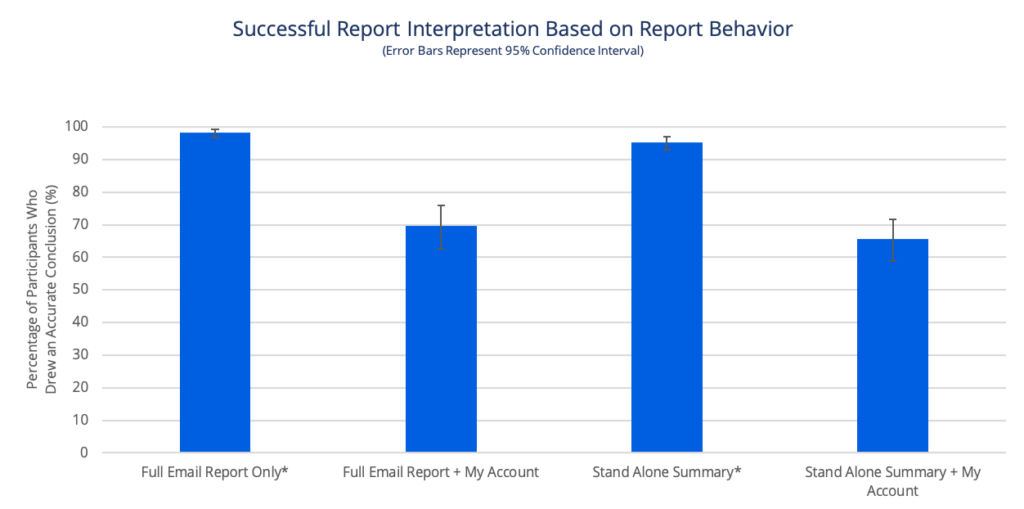
Z Test for Proportions found a significant difference between report viewing behavior and accuracy for each design.
The quantitative data statistically validated that accountability partners want to use an email report that includes a report summary.
Participants were interested in opting in because:
In general, users who chose not to opt into either design did so because they: were having challenges with the services, thought the current report was fine, or wanted to see additional design changes made.
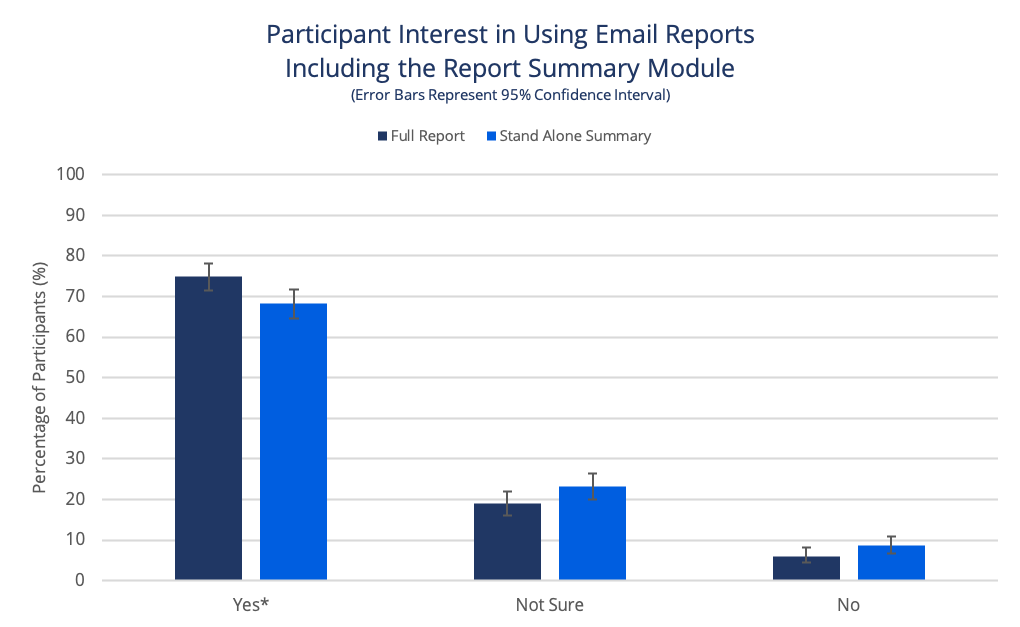
Chi Squared Test of Independence detected an association between design and choice to opt in (p=0.022). Using a post hoc test, Z Test for Proportions found significant differences between ‘Yes and Not Sure’ and ‘Yes and No Choices.’
Multiple studies confirmed that Covenant Eyes' accountability partners saw value in adding the Summary Module concept to their email reports, considering it one of the most important features of the report.
The summary module easily and effectively helps users quickly evaluate a report and draw an accurate conclusion. The summary was a time saver for the full spectrum of report users. For example, we found that some users relied 100% on the summary itself to decide whether or not to be concerned, while others reported first reviewing the summary and then briefly skimming the screenshots to double check - decreasing the amount of time they typically spend carefully reviewing screenshots.
Findings from the follow-up quantitative study also suggest that that aren't negative consequences for shortening the email reports. There is opportunity to explore the relationship between the email report and additional communication channels.
Insights from these research studies were used to develop a pitch for building the Report Summary module. Although the pitch did not move forward at the time of submission, the Summary Module was later built into Covenant Eyes' new Victory App, designed exclusively for accountability partners.
In Victory, the Report Summary Module played a critical role in summarizing the status of in-time internet activity feedback. It helped app users provide accountability more effectively.
The Report Summary Module continues to be iterated upon to provide greater value to accountability partners.
